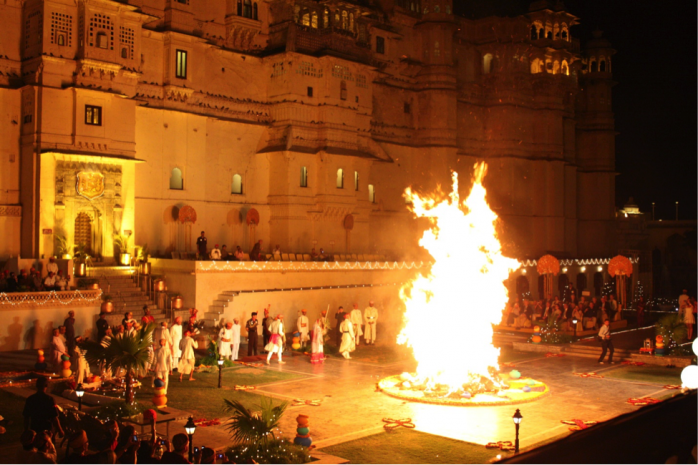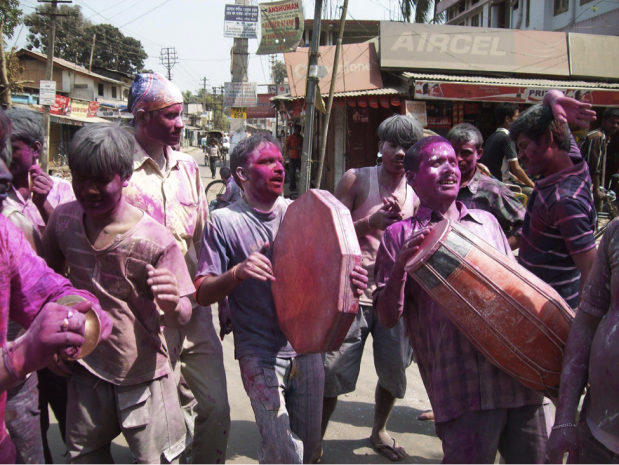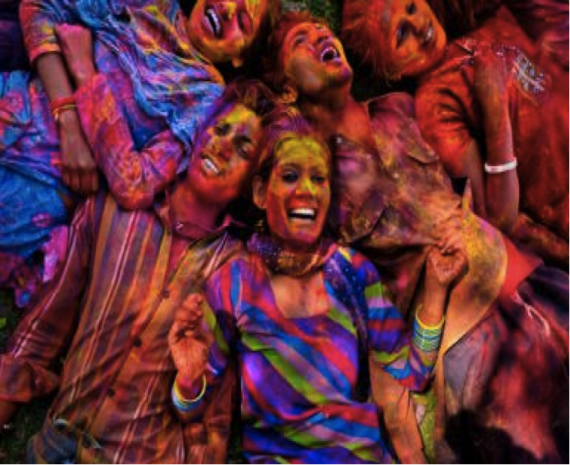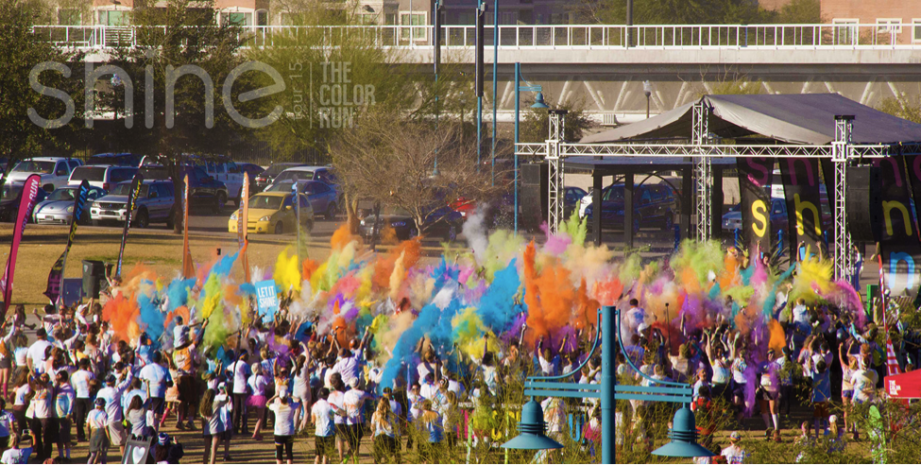Holi – Celebrating the Indian Festival of Color Across America
Date: March 23, 2016
As we officially enter our first week of spring, Indians the world over are gearing up for Holi, the festival that celebrates the end of winter and the onset of spring. Celebrated every year in the lunar month of Phalguna, it will be observed this year tomorrow, March 24. Though it is a religious festival primarily celebrated by Hindus across all states in India, the carefree nature of celebrations has made it very popular among non-Hindus and those outside of India. The rituals around this festival begin tonight with the burning of bonfires, signifying the victory of good over evil.
 (Photo Source: Speakzeasy Blog)
(Photo Source: Speakzeasy Blog)
The festival itself is celebrated on open streets, in parks, and in other public spaces with people dousing each other with dry, colored powders and colored water (often in balloons and water guns). Everyone is fair game—whether friends, family or strangers—resulting in individuals painted in a mosaic of bright color, giving Holi its well-known name, “The Festival of Color”. The festivities also include live music—usually on drums—and a number of special snacks, sweets, and drinks.
 (Photo Source: Diganta Talukdar)
(Photo Source: Diganta Talukdar)
Different regions in India celebrate Holi for a varied number of reasons. It was originally a day that commemorated the beginning of spring, celebrating the harvest. Behind the fun and frolic, however, is a rich legacy of religious mythology and cultural tradition that provide the festival and its associated rituals with deep meaning. Holi derives its name from Holika the evil sister of Hiranyakashipu, the demon king, who considered himself to be God. His son Prahalad refused to worship him and instead was a devout follower of Lord Vishnu, thus incurring his father’s wrath. On the orders of the king, Holika tried to murder Prahalad by having him sit with her in a fire, to which she was immune due to divine powers. Instead, her evil intentions caused the powers to be transferred, leaving Prahalad untouched while she burned to her death. In North Indian states, the festivities are derived from a different legend: the love story of Lord Krishna and Radha. It is alleged that Lord Krishna playfully smeared Radha with colors, marking the start of their romantic relationship.
 (Photo Source: Nikada/Getty Images)
(Photo Source: Nikada/Getty Images)
Today, Holi is celebrated with great zest in many regions of the world, especially in societies that have a large Indian diaspora. Events around this festival have become commonplace in the United States, United Kingdom, Russia, Trinidad and Tobago, Suriname, and Guyana, among others.
In the United States, Holi has been embraced across a diverse set of cities, ranging from Spanish Fork, Utah to Las Vegas, Nevada. Commercial endeavors inspired by this festival of colors have also gained popularity. The Color Run, a 5k run that is held across more than two dozen U.S. cities throughout the year, is one such example.
 (Photo Source: The Color Run)
(Photo Source: The Color Run)
The assimilation of this festival into popular American culture is yet another reminder of the many contributions—cultural, political and economic—that immigrants have made in this country. Indian Americans constitute only 1.15 percent of the total population, but account for a large portion of America’s overall purchasing power. Our recent analysis indicates that in 2014, Indian Americans had an estimated post-tax income of $107 billion. This growing spending power also makes Indian Americans large tax contributors to the economy. In 2014, for example, Indian Americans contributed approximately $34.65 billion in federal tax revenue. They are heavily represented in STEM jobs, fields that have repeatedly faced labor supply shortages, with 42 percent of all foreign-born Indians employed in these fields.
America has always been known as a melting pot of cultures. As communities such as the Indian Americans increasingly integrate into society, their cultural heritage adds vibrancy and their economic contributions further strengthen our country.
